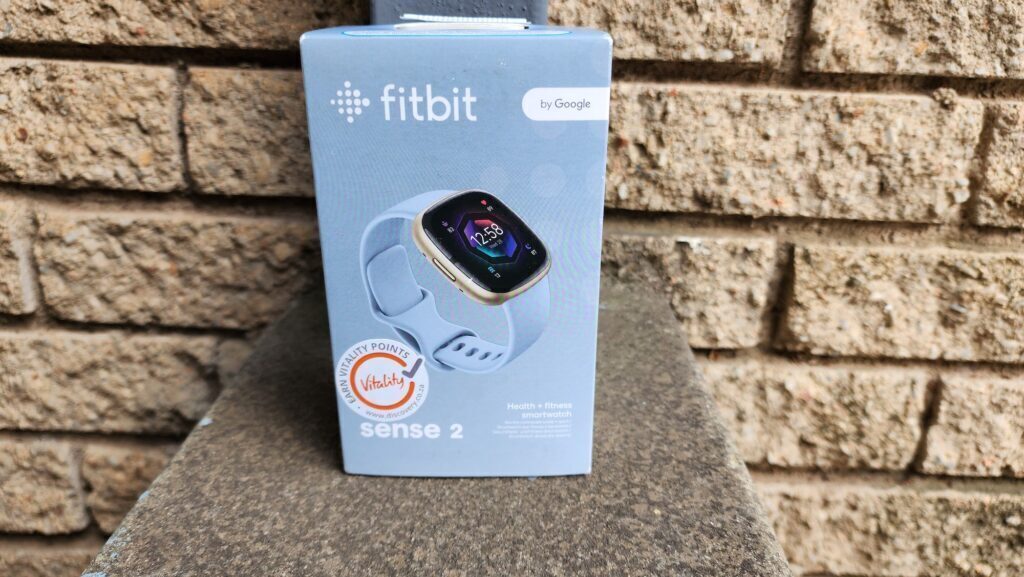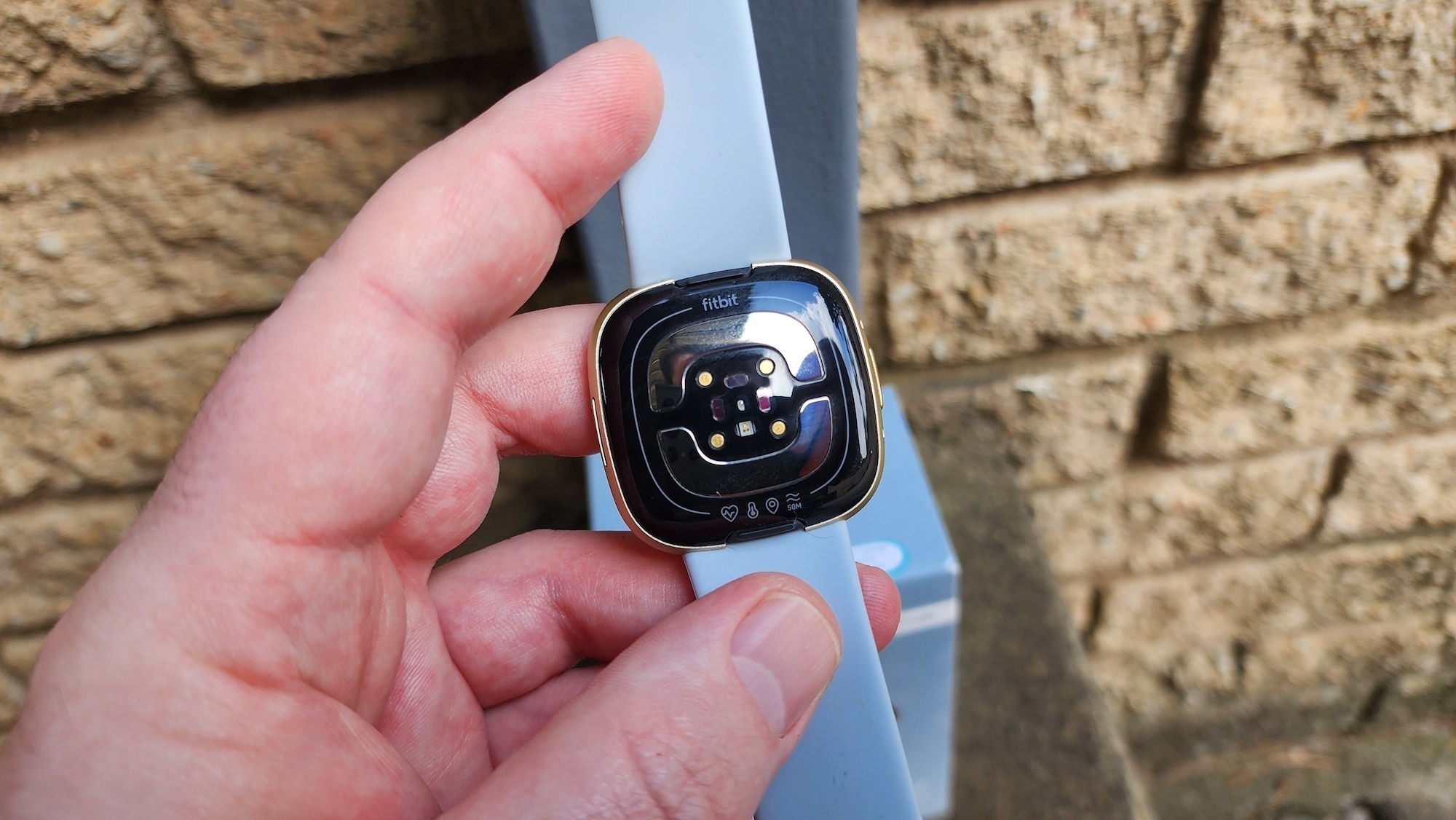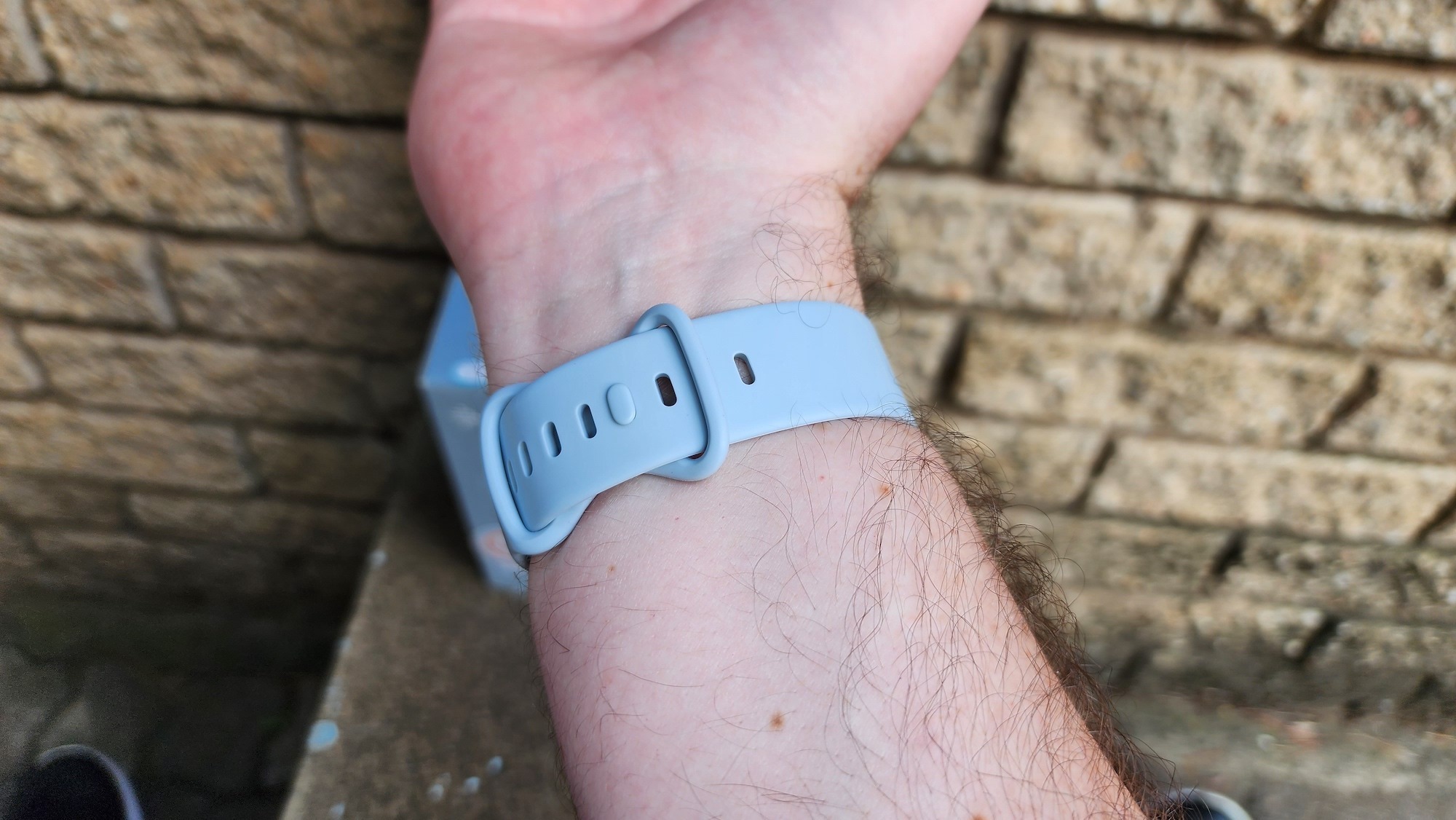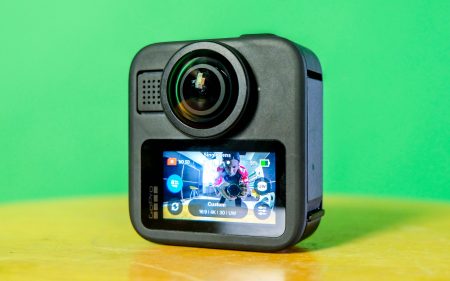The Fitbit Sense 2 is a slightly simplified and much improved take on the original Sense. It's an excellent partner for a range of exercises but it'll do especially well if its user is also on a bit of a mindfulness journey at the same time. In 2022, that should be everyone. It's not. But it should be.
-
Design
-
Features
-
Battery
-
Tracking
Back when it first launched, the Fitbit Sense didn’t make a lot of sense. It had a massive price and its keynote feature, dermal sensors for stress testing, was quickly available on the Fitbit Charge 5 (which launched at half the price). The Fitbit Sense 2 manages to improve on its predecessor in a few ways. One of these, oddly enough, includes yanking out a few software features.
Specifically, third-party app support isn’t a thing here. If you simply must have Spotify controls on your wrist (a frequent Fitbit favourite), this isn’t the wearable for you. But as a fitness-focused wearable, the Sense 2 is a very handy piece of equipment. It would be handier without that still-painful R7,500 price tag, but it’s a smartwatch.
Let’s be clear — you can obtain a range of different devices for this price. Samsung’s Galaxy Watch 5 starts at R6,000. Apple’s Watch SE will set you back about R6,300. You can grab devices from Garmin or Huawei for less than Fitbit’s asking price. The question is: Should you opt for the Sense 2 instead?
Sense-ual design
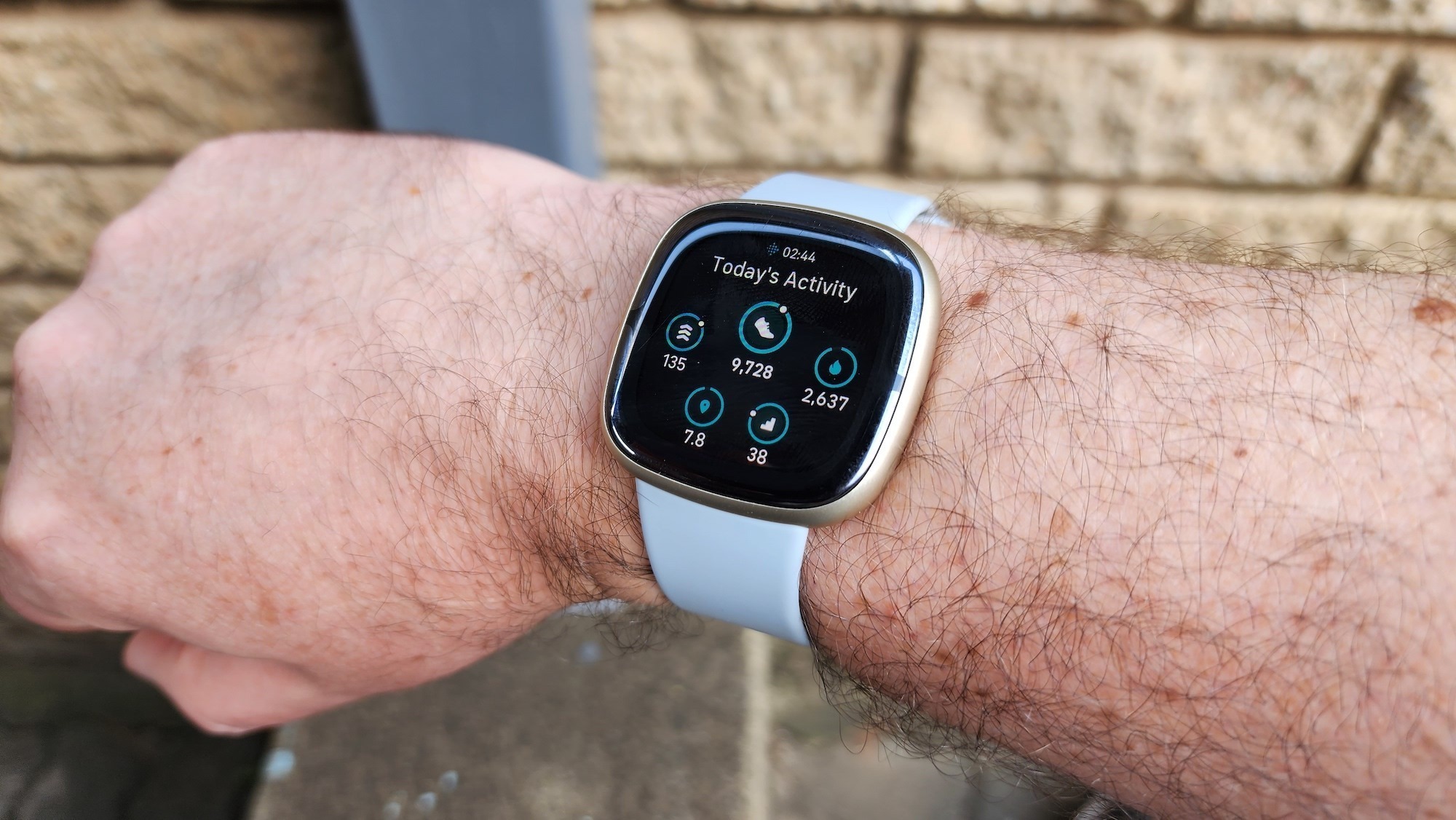
The answer to that question is surprisingly difficult. The Sense 2 does check some significant boxes. Its aluminium case and plastic band — the same as found in the Fitbit Charge 5 — are lightweight enough to feel unobtrusive. It walks the line between Apple and Huawei’s Watch screens in terms of appearance. It looks expensive, which is fine because it bloody well is.
There’s a single physical button on the side of the 40mm casing. The shell is topped by a smooth, OLED touchscreen that’ll handle the bulk of your navigation. It’s a simple-looking device when the screen is off. All of its complications live on the inside.
More than skin deep
The Sense 2 is all about sensors. There’s your standard heart rate sensor, which no wearable will be seen without these days. There’s also an electrodermal activity or EDA sensor. This measures stress and the same sensor is used to deliver a basic electrocardiogram (ECG) test. SpO2 (oxygen saturation) sensors live near the heart-rate sensor on the underside of the Sense 2 and there are a few other sensors besides. Skin temperature and ambient light sensors join up with an accelerometer and altimeter. For non-human functions, there’s a built-in GPS and NFC reader. Somehow there’s also space inside for a haptics motor, a small speaker, a microphone, WiFi, and Bluetooth 5.0.
You’d think that qualifies this wearable as a high-end sports wearable but that’s not really where Fitbit is aiming. Instead, it’s positioned as an everyday sort of device. The kind of thing you’d wear if you were curious about what your body was doing but are more than happy to let someone else do all the math. The result is a stress-focused software package and some intelligent fitness-tracking smarts in a device that could convincingly pretend to be a pure smartwatch.
Flight of the navigator
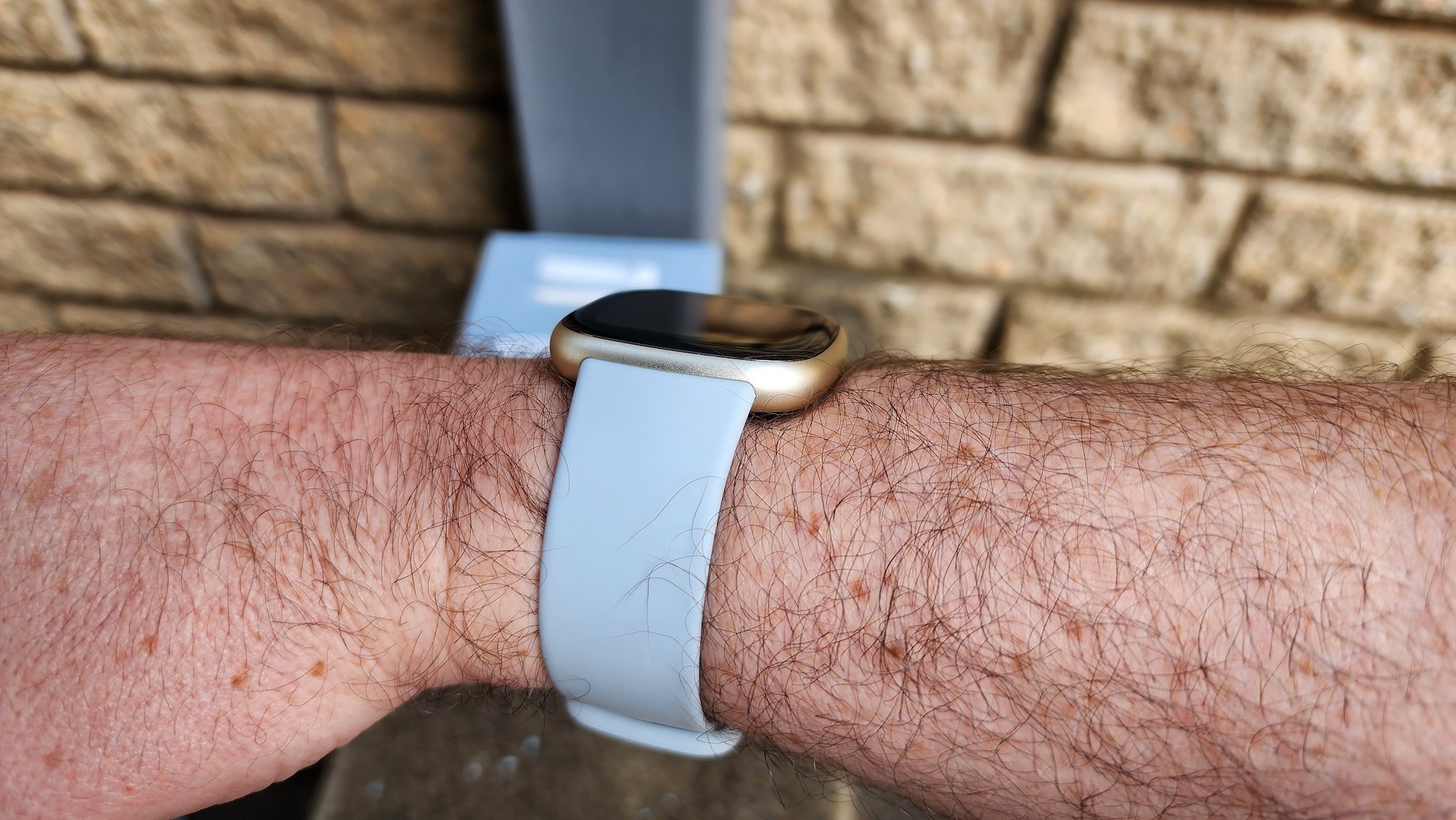
One of our biggest complaints about the Sense 2’s immediate predecessor was its software implementation. The interface was sketchy and unrefined. It was a poor attempt at the streamlined operating system in the company’s Charge devices. This time around, it’s a much better experience. Navigation is slicker and more intuitive. It’s rare that you’ll ever get lost, though you may fumble-finger your way past your desired point from time to time. Usually prodding the lone physical button is enough to correct your horrific mistakes.
Navigation is almost Android-like. Swipe down to get to quick settings, letting you select a Do Not Disturb or Sleep mode, as well as access screen brightness, screen wake, and the always-on-display settings. There’s also a link to the full Settings app there. Swipe up for notifications, and left or right to navigate through the available screens. These can be selected in the app, so you can turf anything that you’re not especially keen on. Pressing the physical key on the main screen brings up a shortcuts menu, with the last two used apps followed by a list of everything installed. Double-press and you’ll get the Notifications, Alexa, Settings, and Fitbit Mobile wallet shortcuts.
On the road again
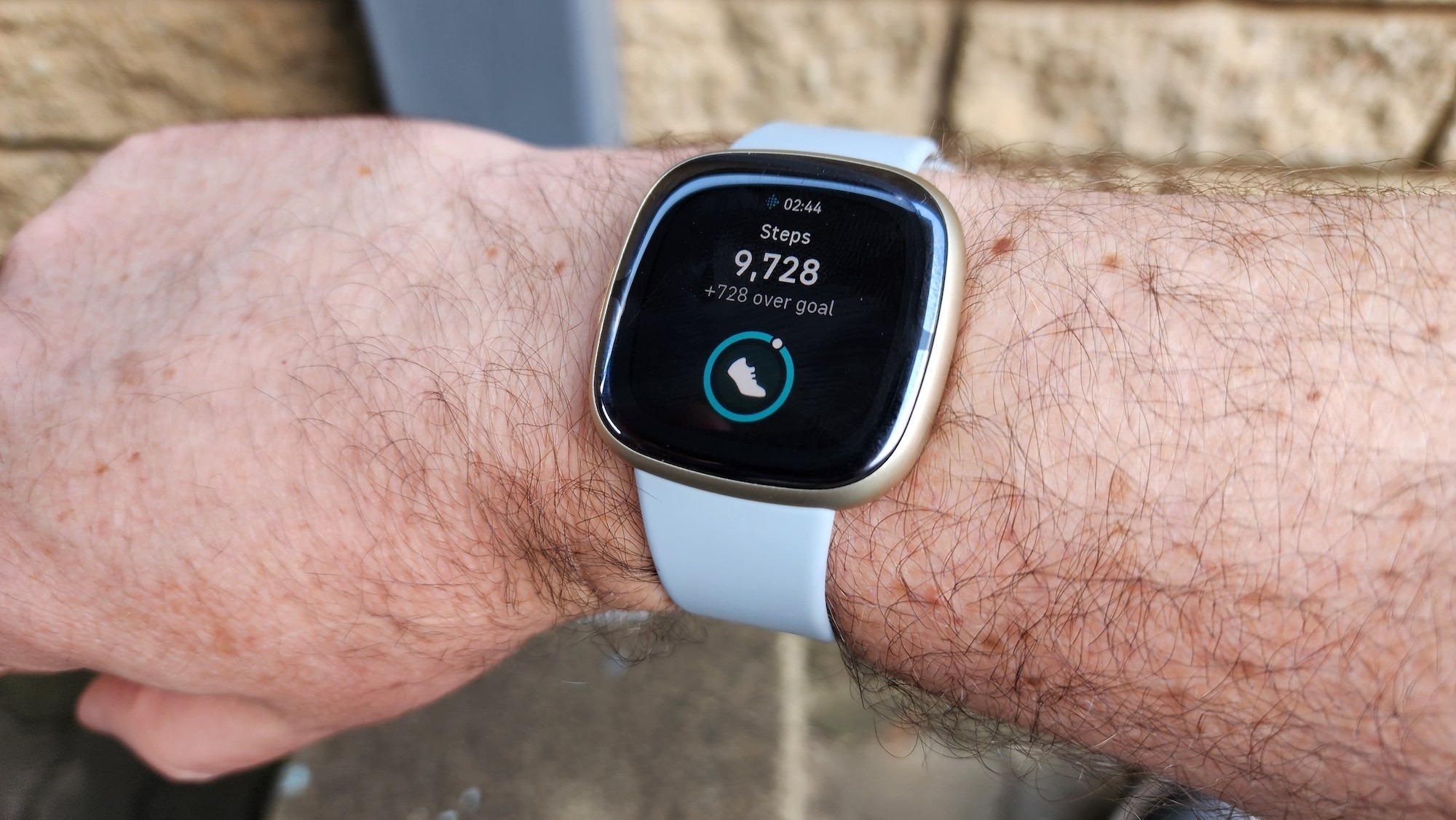
It’s not supposed to be about software, however. Fitbit’s collection of sensors are designed to do a few things: track your movement and workouts, measure your stress levels, and watch you sleep. But not in a creepy way. The device tracks your usual exercises — walking, running, swimming, and the like — but it also gets more esoteric with it. It’ll do Crossfit, golf, dancing, powerlifting, and surfing, among a handful of others. The accuracy of these will vary because… well, the Sense 2 is trying to measure some very interesting workout using the data from your heart and lungs, as well as the motion of a single arm. Errors are bound to creep in.
Regular old movement, though, is as accurate as ever. SmartTrack will automatically catch and log some workouts but without letting you know that it’s doing so. Most users will automatically start that lovely little timer on the generous display, just for the motivation benefits. The built-in GPS is fairly accurate, coming quite close to the measurements from the attached Galaxy S22 Ultra used for this review.
In the same vein, movement and heart rate tracking is also pretty accurate. Distances covered and steps taken were consistent over a week or so and our heart rate measurements lined up with that provided by the Fitbit Charge 5. It’s no chest strap but the provided graph shows a realistic set of data. Time may muck with the sensor — we’ve had this happen with older models — but for now, it’s pretty good at what it does.
A mixed bag

The other major function here is stress measurement. This happens in a few ways. The Fitbit Sense 2 asks you to make detection automatic, in which case it’ll hunt for physiological changes and query them with you every so often. But not at night. That’s sleepy time. Or you can activate the meditation function via the app. If you’re in a hurry, you can just do a quick EDA scan with your hand on the display but we could never get that to work right. Our heart rate always climbs instead of dropping but that’s not a failure with the device. We spoke to Fitbit directly and we’re just physiologically weird.
There’s also the option of a quick ECG. This works the same way as other devices. A pair of fingers on the contact points on the display and two minutes will tell you whether you should visit a cardiologist or if you can keep eating carbs. For most, it’s an odd feature. It’ll just tell you that you have a regular sinus rhythm and then you can get on with your day. If that message ever changes, you need to head to a doctor for a second opinion.
Both of these functions, as well as the built-in GPS, affect the battery. Fitbit claims six or more days but that’s really with the assists turned off. Our experience provided three to four days of battery before the Sense 2 starts to panic and call for its charger. Which isn’t bad. Apple’s Watch needs to be charged every eighteen hours. The Galaxy Watch 5 will make two days if you’re frugal with usage. Being able to work out without much worry is great, but the Sense 2 is not for athletes. It’ll last about five hours with the GPS running continuously. Unless you can finish your marathon in that time, invest in something a little more capable.
Fitbit Sense 2 verdict
The Fitbit Sense 2 is a solid smartwatch. It has a specific goal in mind and it largely succeeds at it. It wants you to move more and it wants you to keep an eye on your moods. It’s basically a mindfulness coach that’s always around that you don’t constantly want to whap upside the head. But it’s also in a crowded market. There are better smartwatches out there and they’re cheaper than this R7,50o wearable. There are better fitness watches (which are also cheaper). Fitbit’s counting on its all-round skills being the winner here, and they might just be right. The app does all of the hard work for users and the inclusion of six months of Fitbit Premium with the device simplifies body information even more. If you’re looking for overall improvement without wanting to go the whole ‘personal trainer’ route, the Sense 2 makes sense. Provided you can support that hefty price tag, of course.

